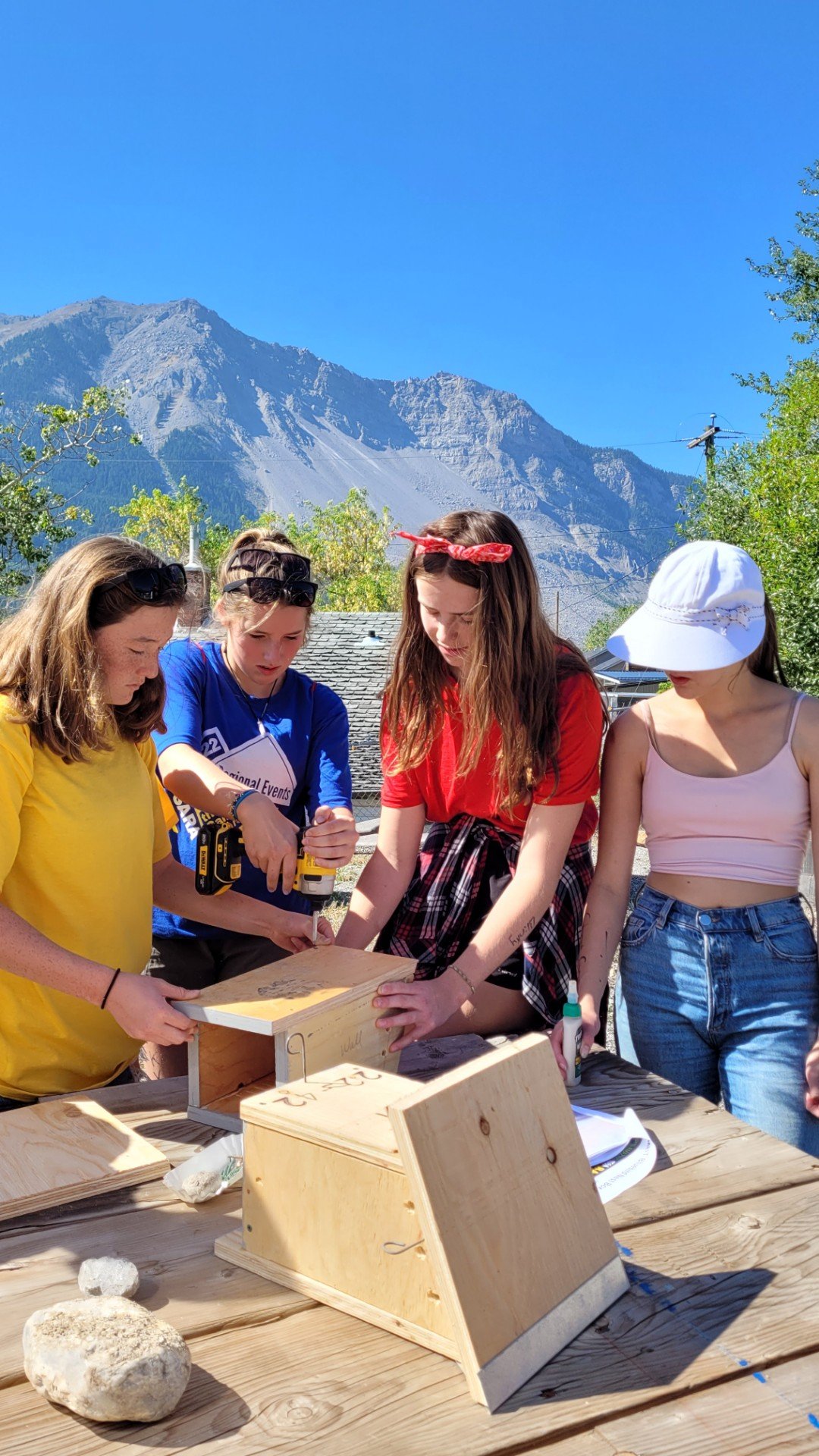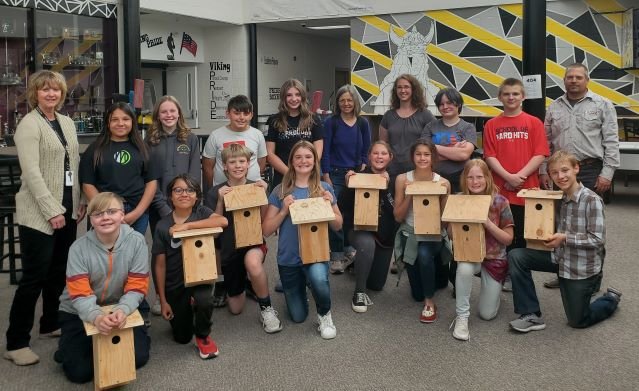Mountain Bluebirds: 5 key insights from 50 years of nest box monitoring
Mountain Bluebirds, the vibrant blue aviators of Alberta skies, have been the focus of intense study and conservation efforts over the past 50 years.
Mountain Bluebird Trails Conservation Society (MBTCS) has been a key contributor to this study. We are always happy to share and learn from the observations of our members and allied organizations.
As we reflect on past newsletters during our 50th Anniversary, we have compiled a short list of interesting insights gained from our collective efforts.
If you want to support Mountain Bluebirds and other cavity nesters, then be sure to keep these in mind.
1. Preference for Weathered Nest Boxes
Mountain Bluebirds have shown a distinct preference for older, weathered nest boxes over newer ones.
This preference could be attributed to the natural, blended appearance of older boxes providing better camouflage from predators, or possibly the texture or scent of aged wood being more appealing.
This insight has implications for conservation strategies, suggesting that maintaining and repairing old nest boxes could be as important as installing new ones.
2. Impact of Climate on Breeding Success
The breeding success of Mountain Bluebirds is closely tied to climate conditions.
Severe weather events, such as harsh winters and delayed Southern Alberta “spring”, can delay their migration and reduce the number of nests and second broods.
Particularly hot and dry summers can affect the availability of their primary food sources, such as insects, impacting their ability to feed their young.
This sensitivity to weather conditions highlights the challenges bluebirds face in the face of climate change and stresses the importance of supportive habitats that can provide reliable food sources.
3. Community-Driven Conservation Efforts
The involvement of local communities has become a significant factor in the conservation of Mountain Bluebirds and other bird species.
Initiatives led by groups like MBTCS highlight the crucial role of volunteers in maintaining nest box habitats and monitoring bird populations, fostering a sense of stewardship and connection to local ecosystems.
By monitoring trails and maintaining nest boxes, community members have a direct hand in fostering healthy bluebird populations.
This grassroots involvement not only aids the birds but also enhances community awareness and engagement with local ecosystems.
4. Challenges from Parasites
Mountain Bluebirds face significant challenges from parasites, notably from common fly larvae that infest their nests. These parasites can severely impact the health of young bluebirds.
Innovative management techniques, such as installing drop-down floors in nest boxes, have been developed to help control these infestations by allowing for easier cleaning and removal of larvae, which helps improve survival rates of bluebird chicks
5. Innovations in Nest Box Design
The community involved in bluebird conservation has experimented with and refined nest box designs to better cater to the birds' needs and preferences.
Notably., MBTCS founder Duncan Mackintosh observed that Mountain Bluebirds require larger nest box hole sizing compared to other bluebird species. An ideal nest box for bluebirds has a sanded maximum 3.97 cm (1 9/16 inches) diameter entrance hole approximately 5.0 cm (2”) below the front roof top.
Mackintosh also noted the Mountain Bluebird’s preference for a larger nest box; approximately 12.7 cm x 12.7 cm (5” x 5”).
Newer designs now often include features like metal shields to protect against predators and weather elements, as well as color preferences, where it has been observed that bluebirds show a preference for nest boxes painted grey over those that are new plywood, suggesting that appearance may play a role in nest box selection by the birds
These design enhancements are based on direct observations and feedback from our community involved in bluebird conservation.
In light of the fast-changing climate in Southern Alberta, we would be remiss if we did not mention the sixth key insight learned over the past 50 years…
6. Sensitivity to Environmental Changes
Studies have indicated that Mountain Bluebirds are highly sensitive to changes in their environments, such as the availability of insects and suitable nesting sites.
Warmer and more arid environments lead to extensive consequences. For instance, a nesting box situated near a gravel road may experience a rise in airborne dust due to elevated temperatures. This dust affects not only the bluebirds residing in the box but also the insects they rely on for sustenance.
Bluebird health and reproductive success depend greatly on the conditions of their habitats, emphasizing the need for conservation, ongoing environmental management and research.
Bird Conservation Efforts more important than ever
Each observation by MBTCS Trail Monitors contributes to a more nuanced approach to understanding, managing and protecting birds in general.
These insights help guide future conservation efforts to ensure the survival and prosperity of native species.
We cannot emphasize enough the importance of continuous observation and community involvement in bird conservation. So, bring a friend along next time you go trrail monitoring! Do it for the birds!!
Building, placing, and monitoring nest boxes is a great activity for everyone to enjoy! The entire process is even more enjoyable with a friend - so encourage someone special in your life to join you as a Trail Monitor!







